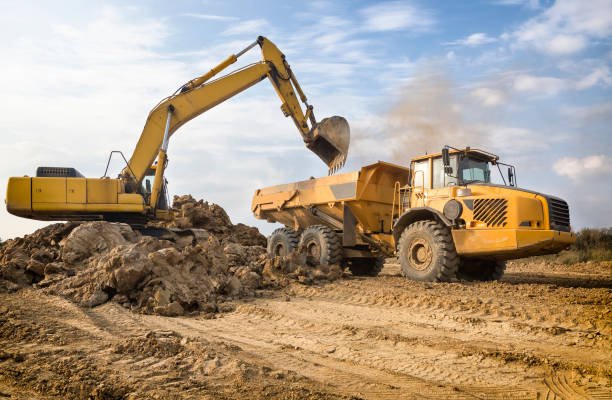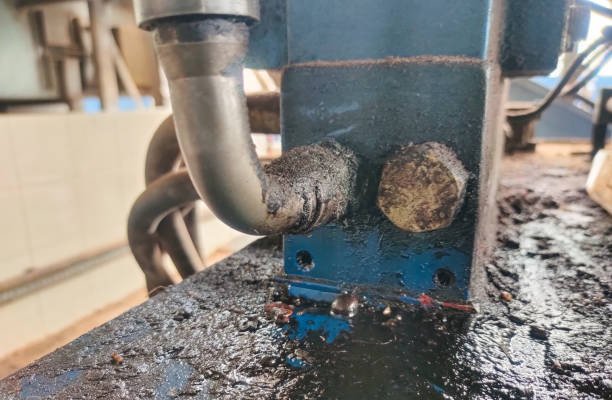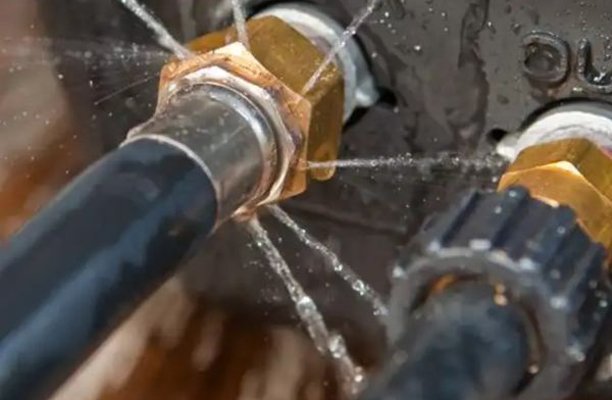O-ring face seal (ORFS) fittings are a gold standard in hydraulic systems, offering unmatched reliability and sealing performance. Engineered with elastomeric O-rings, these fittings eliminate leaks even under high-pressure and high-vibration conditions. This makes them indispensable in industries like construction, agriculture, oil & gas, and renewable energy.
In this guide, we’ll explore five critical aspects of ORFS fittings, including why they are the best choice for leak prevention, common leakage issues, their diverse applications, tips for system design, and step-by-step assembly instructions. By understanding these key insights, you can optimize your hydraulic systems for efficiency, reliability, and cost savings.
1.What Are O-Ring Face Seal Fittings?
O-ring face seal fittings, commonly abbreviated as ORFS, are hydraulic connectors designed to create a leak-proof seal between two mating surfaces. They incorporate an elastomer O-ring seated in a groove on the fitting’s face, which compresses to form a tight seal when mated. These fittings excel in high-pressure environments where leak prevention is critical.
2. Key Components of O-Ring Face Seal Fittings

- Body: The main component that houses the O-ring groove.
- O-Ring: The sealing element made of elastomers like nitrile, fluorocarbon, or EPDM.
- Nut and Sleeve: Secure the fitting in place and ensure proper alignment.
- Threaded End: Connects to hoses or pipes for hydraulic fluid transfer.
Each component plays a crucial role in ensuring the fitting’s overall performance and reliability.
3. Why Choose ORFS Fittings for Hydraulic Systems?
O-ring face seal fittings are a top choice for hydraulic systems due to their superior performance and versatility. Here’s what makes them stand out:
- Exceptional Sealing Performance: Unlike traditional metal-to-metal fittings, ORFS fittings rely on elastomeric O-rings (typically Buna-N or Viton) to form a leak-proof seal. The O-ring compresses against a flat-face sleeve, creating a metal-to-metal seal with the added protection of the O-ring, ensuring zero leakage even under extreme conditions.
- High Pressure Capability: ORFS fittings can handle pressures up to 6,000 PSI, making them suitable for heavy-duty applications like construction equipment, industrial machinery, and oil rigs.
- Durability in Challenging Conditions: ORFS fittings are specifically designed for environments with constant vibration, pressure surges, and temperature fluctuations. This makes them ideal for off-road vehicles, agricultural machinery, and oilfield applications.
These attributes make ORFS fittings a preferred solution for industries where reliability is critical.
4. Top Causes of Hydraulic System Leakage
Hydraulic system leaks are a common problem, but ORFS fittings can significantly reduce these issues. However, leaks can still occur if certain factors are not addressed:
- Improper Installation (60%): The most common cause of leakage is improper assembly, such as overtightening or under-tightening the fitting, or neglecting to lubricate the O-ring. Proper training and adherence to installation guidelines are essential to prevent this.
- Poor System Design (20%): Mismatched components, incorrect material selection, and poor layout during system design can lead to unnecessary stress on fittings, increasing the risk of leaks.
- Low-Quality Components (15%): Using substandard fittings, O-rings, or tubing can compromise the system’s integrity. Always choose components that meet SAE J1453 standards.
- System Abuse (5%): Overpressure, mechanical shocks, and improper maintenance can contribute to leaks over time.
Cost of Leaks:
Hydraulic leaks are not just a nuisance—they are expensive. A single drop per second can cost a system $75,000 annually in lost fluid alone. ORFS fittings minimize these risks, providing a reliable, cost-effective solution for hydraulic systems.
5. How Do O-Ring Face Seal Fittings Work?
ORFS fittings work by compressing the O-ring between two flat surfaces. When tightened, the O-ring deforms slightly to fill any micro-gaps, ensuring a tight seal. This sealing mechanism prevents leaks even under fluctuating pressures and temperatures.
6. Material Selection for O-Ring Face Seal Fittings
The material of the O-ring and fitting body affects performance significantly:
- O-Rings:
- Nitrile (Buna-N): Ideal for petroleum-based fluids.
- Fluorocarbon (Viton): Suitable for high-temperature applications.
- EPDM: Resistant to water-based fluids.
- Fitting Body:
- Stainless Steel: Corrosion resistance.
- Carbon Steel: Strength and durability.
- Brass: Suitable for low-pressure systems.
7. Applications of ORFS Fittings

ORFS fittings are widely used in various industries and applications due to their reliability and versatility. Key areas include:
- Off-Road Equipment: Tractors, excavators, and other heavy machinery benefit from ORFS fittings, as they withstand constant vibration and high-pressure conditions.
- Oil & Gas: From wellheads to hydraulic fracturing operations, ORFS fittings ensure leak-free performance in critical systems.
- Industrial Equipment: Turbine flow meters, hydraulic controls, and pneumatic systems rely on ORFS fittings for accurate flow measurement and reliable sealing.
- Renewable Energy: Wind turbines and hydroelectric plants use ORFS fittings to ensure reliable operation under demanding conditions.
- Chemical Processing: ORFS fittings are used in chemical plants for their ability to handle corrosive fluids without leakage.
Why ORFS is Superior:
Unlike traditional metal-seal fittings, ORFS fittings eliminate the need for adapters, reducing potential leak points and minimizing installation space requirements. Their elastomeric seals also provide a longer lifespan, allowing manufacturers to extend warranty periods for equipment.
8. System Design for Leak Prevention
Proper system design is the foundation of leak-free hydraulic systems. ORFS fittings offer unparalleled reliability, but they must be integrated thoughtfully into the system. Key considerations include:
- Material Selection:
- Steel: Electroplated zinc-coated steel is the standard choice for most applications due to its durability and resistance to rust.
- Stainless Steel: Ideal for corrosive environments, such as offshore applications or systems exposed to caustic chemicals.
- O-Ring Material: Buna-N is suitable for general use, while Viton or fluorocarbon O-rings are preferred for high-temperature or chemically aggressive environments.
- Pressure Ratings:
- ORFS fittings typically adhere to a 4:1 safety ratio, meaning the fitting can handle four times the system’s operating pressure. For systems with severe vibrations or shocks, consider a de-rated pressure value to ensure safety.
- Temperature Considerations:
- The fitting material and O-ring must withstand system temperatures. For instance, Viton O-rings perform well in temperatures up to 400°F, whereas Buna-N is better suited for lower temperatures.
Other design factors include fluid velocities, tube dimensions, and the potential for mechanical shock. Proper planning reduces stress on fittings and improves overall system efficiency.
9. Assembly Instructions for ORFS Fittings
Correct assembly is crucial to maximize the performance and lifespan of ORFS fittings. Follow these steps:
- Inspect the Fitting: Check for contamination, damage, or misaligned O-rings before installation.
- Lubricate Components: Apply hydraulic fluid or a light lubricant to the O-ring and threads. This reduces friction and ensures a consistent seal.
- Finger-Tighten: Mate the flange face with the O-ring and finger-tighten the flange nut. Ensure the O-ring is evenly seated.
- Torque to Specification: Use a torque wrench to tighten the flange nut according to the manufacturer’s recommended values. Over-tightening can deform threads and compromise the seal.
Why Wet Torqueing Matters:
Wet torqueing involves lubricating the threads and O-ring during assembly. This reduces friction, ensures consistent clamping force, and prevents damage to the fitting under high-pressure conditions. Neglecting this step can lead to leaks, reduced efficiency, and shorter system lifespan.
10. Common Issues with O-Ring Face Seal Fittings
- O-Ring Degradation: Caused by incompatible fluids or extreme temperatures.
- Overtightening: Can damage the O-ring or fitting face.
- Thread Galling: Prevent by lubricating threads before assembly.
- Improper Alignment: Leads to uneven O-ring compression and leaks.
11. Maintenance Tips for O-Ring Face Seal Fittings
- Regularly inspect fittings for wear and damage.
- Replace O-rings during routine maintenance.
- Clean threads and sealing surfaces before reassembly.
- Store unused fittings in a clean, dry environment.
12. O-Ring Face Seal Fittings vs. Other Fittings
| Feature | ORFS Fittings | Compression Fittings | Flare Fittings |
|---|---|---|---|
| Leak Resistance | High | Moderate | Moderate |
| Pressure Handling | Very High | Moderate | High |
| Ease of Installation | Easy | Easy | Moderate |
| Vibration Resistance | Excellent | Poor | Good |
Conclusion
O-ring face seal fittings are an essential component in modern hydraulic systems, providing leak-free performance in high-pressure and high-vibration applications. By understanding their benefits, addressing common leakage issues, and following proper assembly procedures, you can ensure your hydraulic systems operate efficiently and reliably.
Whether in off-road vehicles, oil rigs, or renewable energy systems, ORFS fittings offer the best solution for industries that demand durability and precision. Invest in ORFS fittings to reduce downtime, prevent costly fluid loss, and extend the lifespan of your equipment.
FAQs
What makes ORFS fittings different from traditional fittings?
ORFS fittings use an elastomer O-ring to ensure a leak-proof seal, offering superior reliability compared to traditional fittings.
Are ORFS fittings reusable?
Yes, but you must inspect and, if necessary, replace the O-ring to ensure a proper seal.
Can I use ORFS fittings in high-temperature applications?
Yes, but ensure the O-ring material is suitable for the operating temperature.
What is the typical lifespan of an ORFS fitting?
With proper maintenance, ORFS fittings can last for years, depending on operating conditions and material.
How do I know if my system needs ORFS fittings?
If your system operates under high pressure and requires leak-proof reliability, ORFS fittings are an excellent choice.
What tools are needed for installing ORFS fittings?
A torque wrench, thread lubricant, and a cleaning cloth are essential for proper installation.





